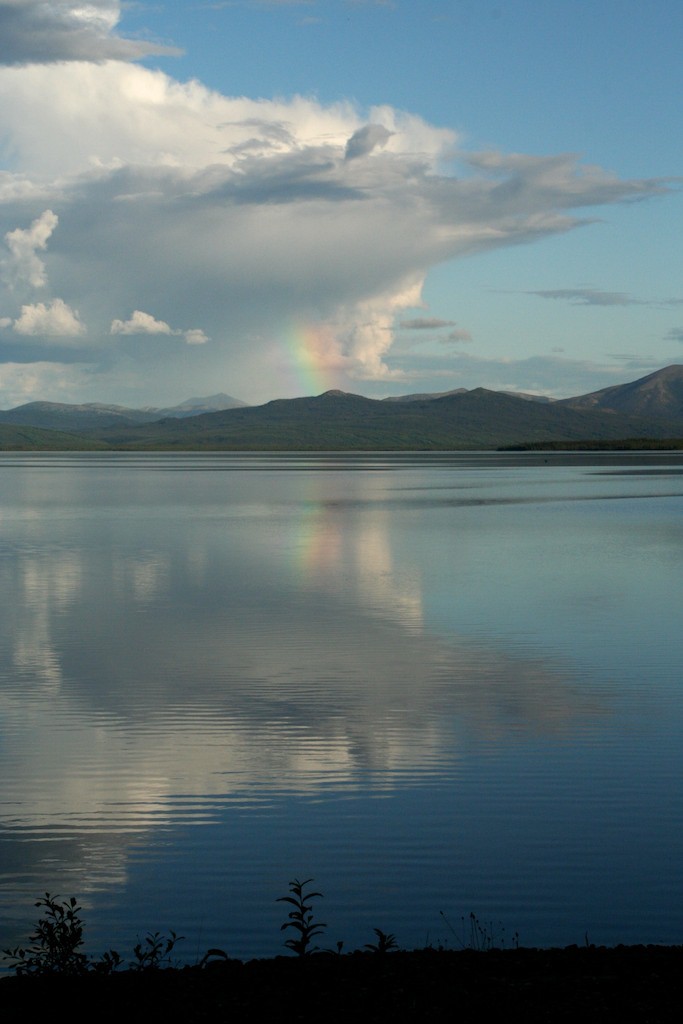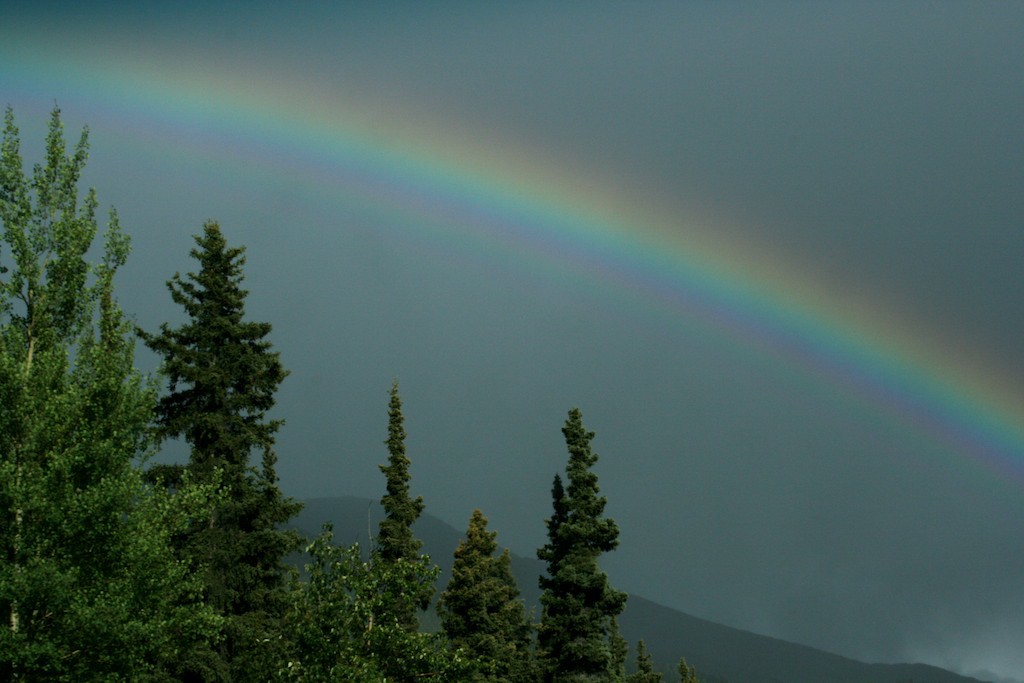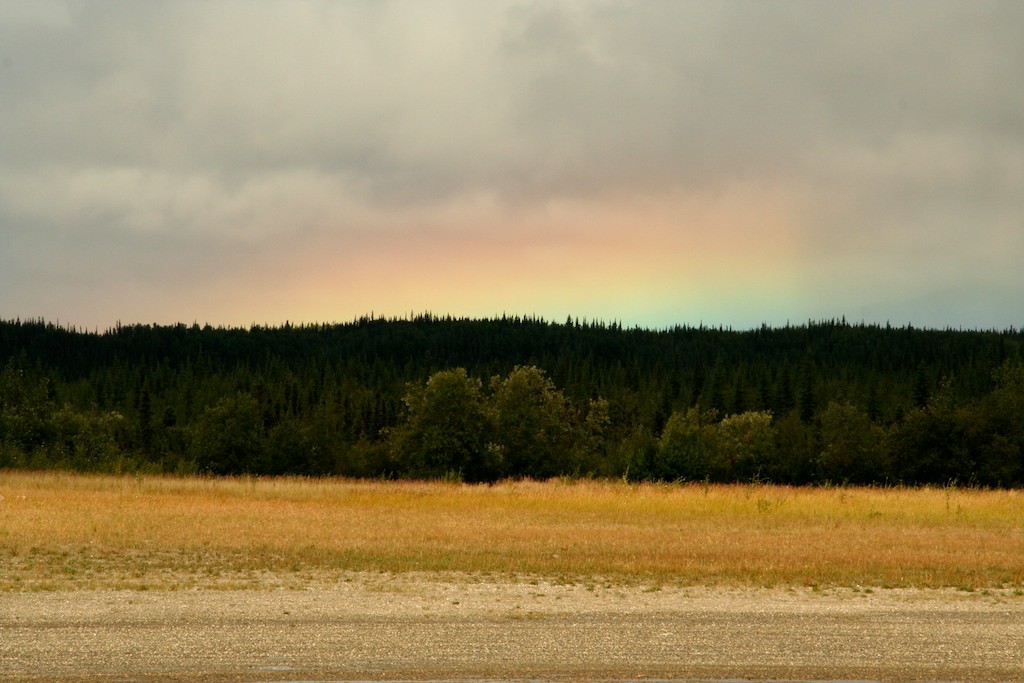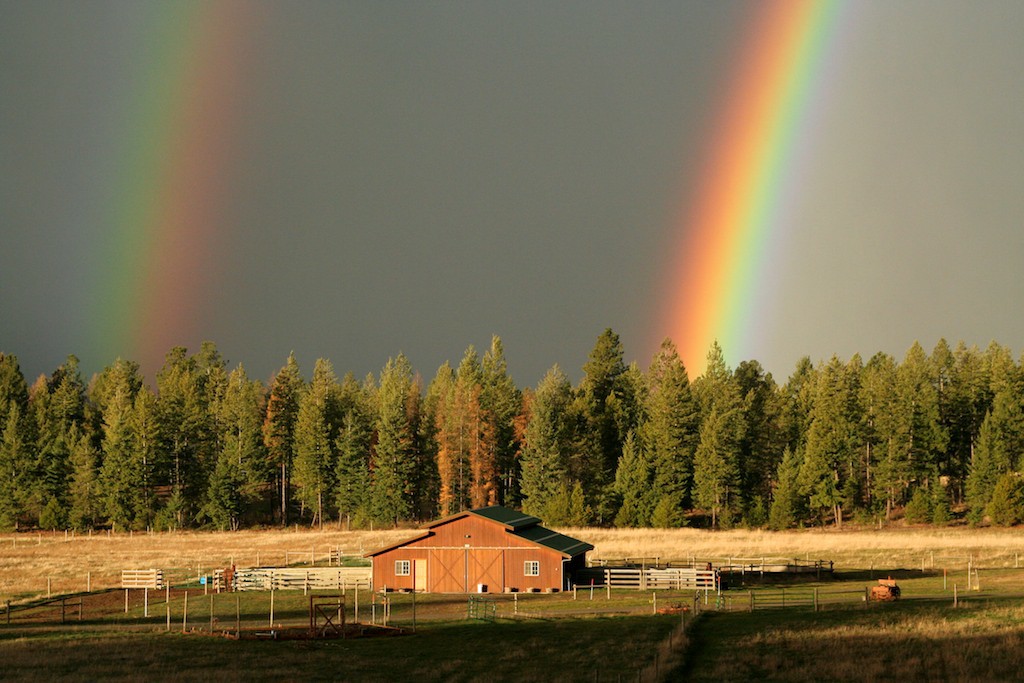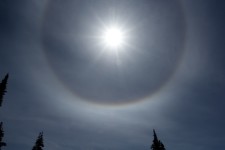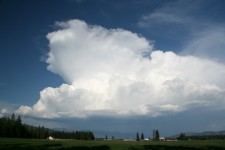Raining one minute and sunny the next, the ever changing weather of spring creates prime rainbow viewing opportunities. Just as no two snowflakes are alike, no two rainbows are alike. Rainbows can be bright, dim, a half-circle, a small sliver or be flanked by a secondary rainbow (double rainbow).
Find out fascinating facts about rainbow:
1. The brightest rainbows occur when there are large water droplets, often during thunderstorms or heavy rainfalls. Red, green and violet shine the brightest in these rainbows.
2. Rainbows with a weak red color indicate smaller water droplets and in a fine mist, only the color violet may be visible.
3. Rainbows are an optical phenomenon created by sunlight and water droplets, visible only to those in certain locations. Rainbows form by light refracting and reflecting inside water droplets.
4. Sunlight, while it appears white, can be separated into a spectrum of different colors: red, orange, yellow, green, blue, indigo and violet. The spectrum appears when the sunlight is refracted (bent), such as through a prism or water droplet.
5. Rain on gray, dreary days doesn’t produce rainbows because a key element is lacking–sunlight. Sunlight and water droplets are the two key components of a rainbow. The third is the viewer.
6. To see a rainbow, the viewer has to be facing away from the sun and facing towards a rain shower (or waterfall with mist). A rainbow is visible because the sun’s rays of light are being reflected (just like an image in a mirror) inside the water droplets of the rain shower back towards your eyes.
7. If the sun is too high, the rainbow will be below the horizon and you won’t see it. Rainbows are only visible when the sun is low in the sky (morning and evening) for this reason. However, when in an airplane, it is possible to see the entire circle of a rainbow.
8. For a primary rainbow (the main rainbow), the sunlight entering the water droplet is bent and separated into the spectrum of colors. The individual colors then reflect off the back of the raindrop and bend a second time when the light exits the front of the raindrop. Each color refracts and reflects at a certain angle, which is why the color spectrum is always in the same order (red, orange, yellow, green, blue, indigo and violet).
9. Since red light is bent the least, it will always appear on the outside of the rainbow, while violet is bent the most and will always appear on the inside of the primary rainbow.
10. On secondary rainbows (the rainbows that appear outside of the primary rainbow) the colors are reversed, with violet on the inside and red on the outside. The reversal is because the light entering the water droplet undergoes two reflections inside the droplet before exiting.
The second reflection also absorbs some of the light’s intensity, so the exiting light is typically at one-tenth of the intensity of the primary rainbow. The resulting rainbow is also twice as wide.
11. While each color has a specific angle that it typically refracts and reflects at, some light rays deviate slightly. This deviation is what causes the lighter sky beneath the primary rainbow. These deviating rays are only seen beneath the primary rainbow because they exit the water droplets at a higher angle, which reaches your eye.
12. The sky is darker between the primary and secondary rainbows because no internally reflected rays (even deviating rays) exit at an angle received by the observer.
Basically, every raindrop is refracting and reflecting the same colors of light across the spectrum, but only one color from each raindrop will be at the correct angle to strike your eye.
13. Two people standing two feet apart would see two different rainbows because different colored rays are striking their eyes. Thus, every rainbow is truly different because every person sees their own personal rainbow.
Originally published April 2013. Updated March 2024.

